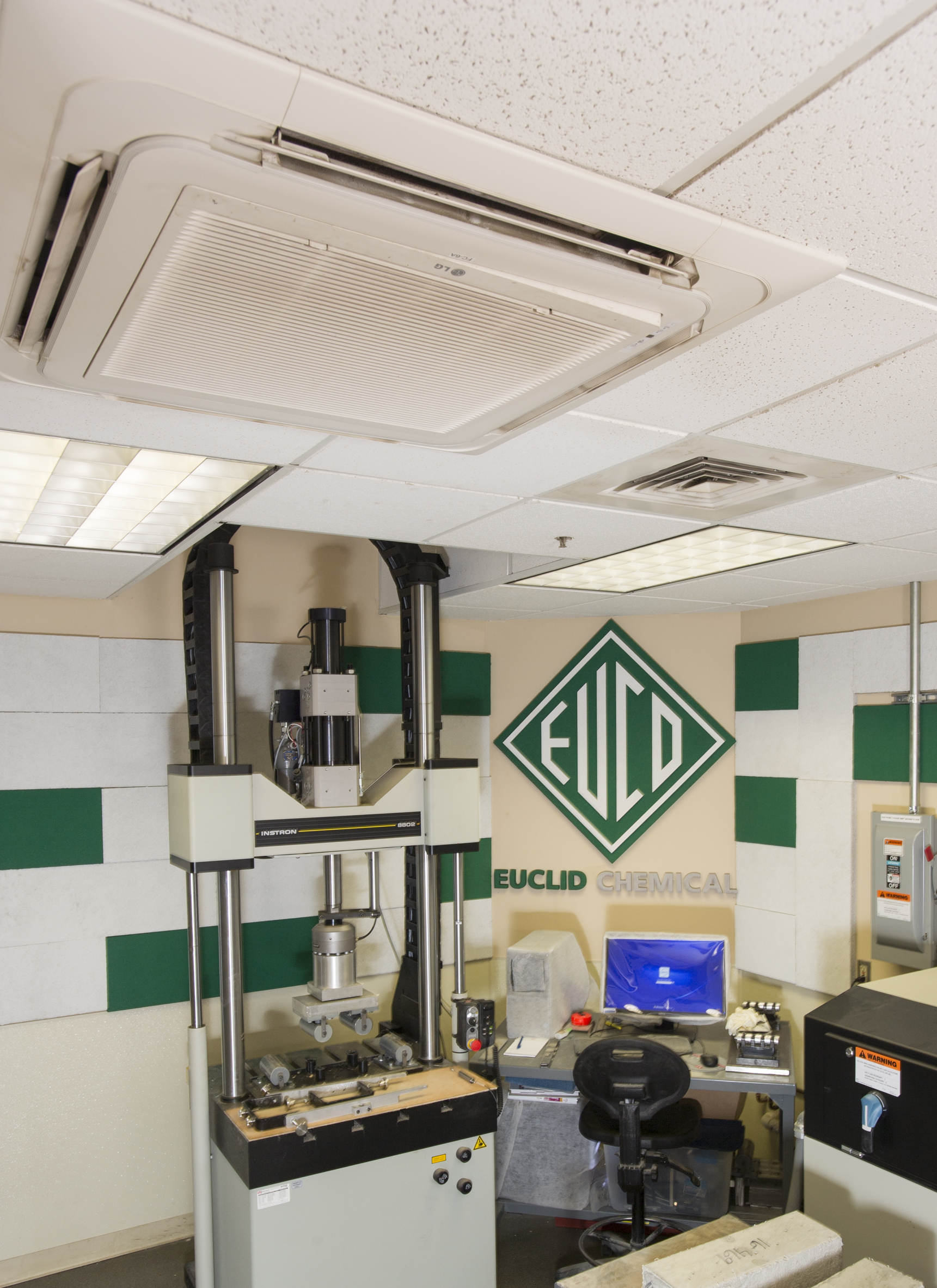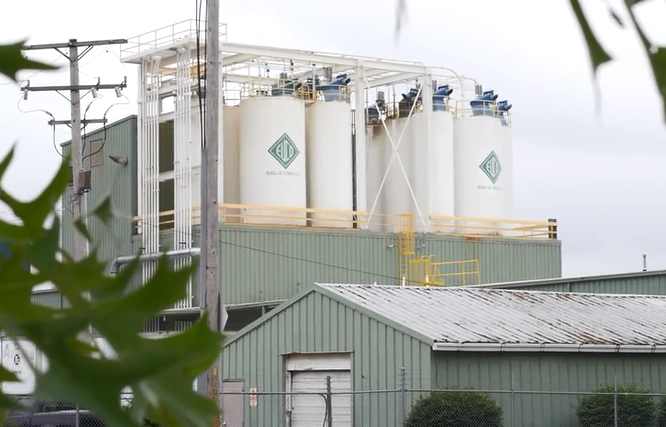Euclid Chemical, based in Cleveland, has been supplying the construction industry with products to improve the strength, appearance, and usability of concrete since 1910. Now a large, multi-national corporation, Euclid Chemical’s main offices are in a two-story, 15,000 square foot building that also contains laboratories where they develop products ranging from sealants to micro synthetic fibers.
Until recently, the building relied upon an aging VAV system with terminal reheat to keep their offices comfortable and to maintain environmental conditions in the laboratories. Even when new, records showed the system had not performed as designed. This inadequate performance was compounded by cumulative effects of years of normal wear and tear along with questionable modifications.
Ultimately, the system no longer kept people comfortable, broke down frequently and was incredibly inefficient. After analyzing the utility bills, Joe Messer, Director of Engineering for Euclid Chemical, realized that building had an average annual energy use of 38 kWh/square foot -- over twice the average consumption for offices in the same geographic area, and more than most of Euclid’s manufacturing facilities. Messer knew Euclid Chemical needed to upgrade to a dependable and efficient system that would meet their needs for years to come.
CRITERIA:
The building housed both office areas and laboratories, so throughout the facility the system had to provide individual temperature control which, at any given time, may require both heating and cooling in different areas.
In the lab, the system also had to account for the unique challenge of quickly adapting to rapidly changing make-up air requirements as laboratory fume hoods started and stopped. It also had to work in the Ohio climate where the outdoor temperature ranged from sub-zero weather in the winter to humid high-90’s in the summer. But above all else, the system had to have a manageable upfront cost and an attractive payback to the Euclid financial team.
SOLUTION:
Messer began the process of finding a new solution and reached out to trusted engineer Andy Culberson of Geisel Heating and Cooling. Culberson identified VRF (Variable Refrigerant Flow) technology as the optimum solution, and reached out to Peter Eno of Refrigeration Sales Corporation to collaborate on a best-in-class solution based on VRF technology from LG Electronics. Together they designed a system around LG Multi-V heat recovery systems.

The bulky 50 ton DX unit on the roof was replaced by a pair of small air-cooled outdoor units on the ground, and the VAV boxes inside the building were replaced with LG’s concealed high-static VRF indoor units. To account for the need for ventilation air and makeup air when the laboratory fume hoods were in use, a small makeup air unit with a water heating coil was added to provide ventilation air at a high-static pressure to the LG VRF indoor units. Since this was 100 percent outdoor air, the airflow could be adjusted to precisely meet the ventilation requirements as they changed. The LG Multi V is a heat recovery system, so it can heat the zones that need it while cooling others simultaneously which delivers precise temperature in all parts of the facility regardless of Ohio’s weather, including subzero winters.
After they presented the system proposal, everyone at Euclid Chemical was sold on the concept. Based on the problems and poor performance of the existing system, Messer conservatively estimated the new system would cut their utility bills by 40 percent. What’s more, they could reuse the existing distribution and supply ductwork, reducing upfront installation costs, which further sold the financial team.
RESULTS:
Once construction was completed, the system performance exceeded expectations, according to Messer. After implementation, the facility saw a 70 percent annual energy reduction compared to the average of the previous five years. (See graph.)

Equally important, the new system provides a quiet, comfortable environment for people to work. “Employees have definitely noticed an improvement in comfort,” said Messer. “This allowed us to focus on our core business instead of worrying about HVAC.” He is currently evaluating other buildings within the Euclid portfolio and, not surprisingly, he’s considering LG VRF solutions.
Related Stories
| Aug 11, 2010
LEED 2009 cites FloorScore Certification as indicator of indoor air quality
The U.S. Green Building Council (USGBC) has cited FloorScore® certified flooring products as eligible for credits under the new LEED 2009 Version 3 guidelines. Reflecting the inclusion of FloorScore, the new LEED IEQ Credit 4.3 for Low-Emitting Materials has been expanded from “Carpet Systems” to “Flooring Systems” to include hard surface flooring.
| Aug 11, 2010
Billings at U.S. architecture firms exceeds $40 billion annually
In the three-year period leading up to the current recession, gross billings at U.S. architecture firms increased nearly $16 billion from 2005 and totaled $44.3 billion in 2008. This equates to 54 percent growth over the three-year period with annual growth of about 16 percent. These findings are from the American Institute of Architects (AIA) Business of Architecture: AIA Survey Report on Firm Characteristics.
| Aug 11, 2010
CHPS debuts high-performance building products database
The Collaborative for High Performance Schools (CHPS) made a new tool available to product manufacturers to help customers identify building products that contribute to sustainable, healthy, built environments. The tool is an online, searchable database where manufacturers can list products that have met certain environmental or health standards ranging from recycled content to materials that contribute to improved indoor air quality.
| Aug 11, 2010
29 Great Solutions for the AEC Industry
AEC firms are hotbeds of invention and innovation to meet client needs in today's highly competitive environment. The editors of Building Design+Construction are pleased to present 29 "Great Solutions" to some of the most complex problems and issues facing Building Teams today. Our solutions cover eight key areas: Design, BIM + IT, Collaboration, Healthcare, Products, Technology, Business Management, and Green Building.







